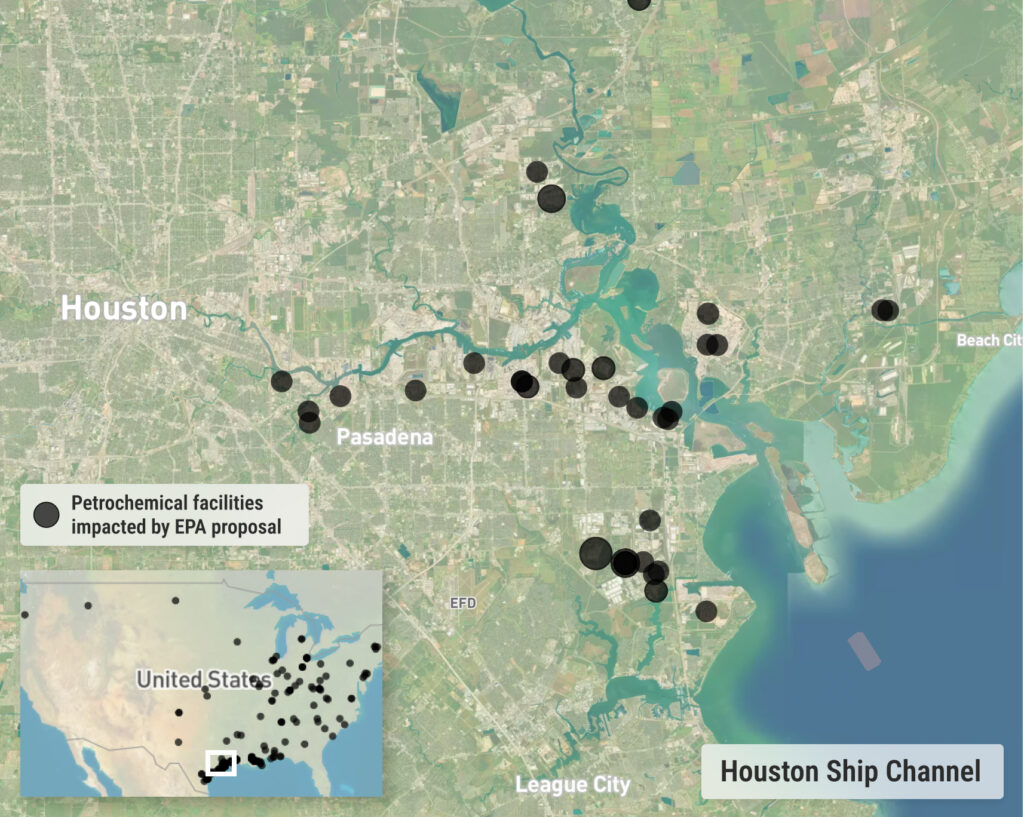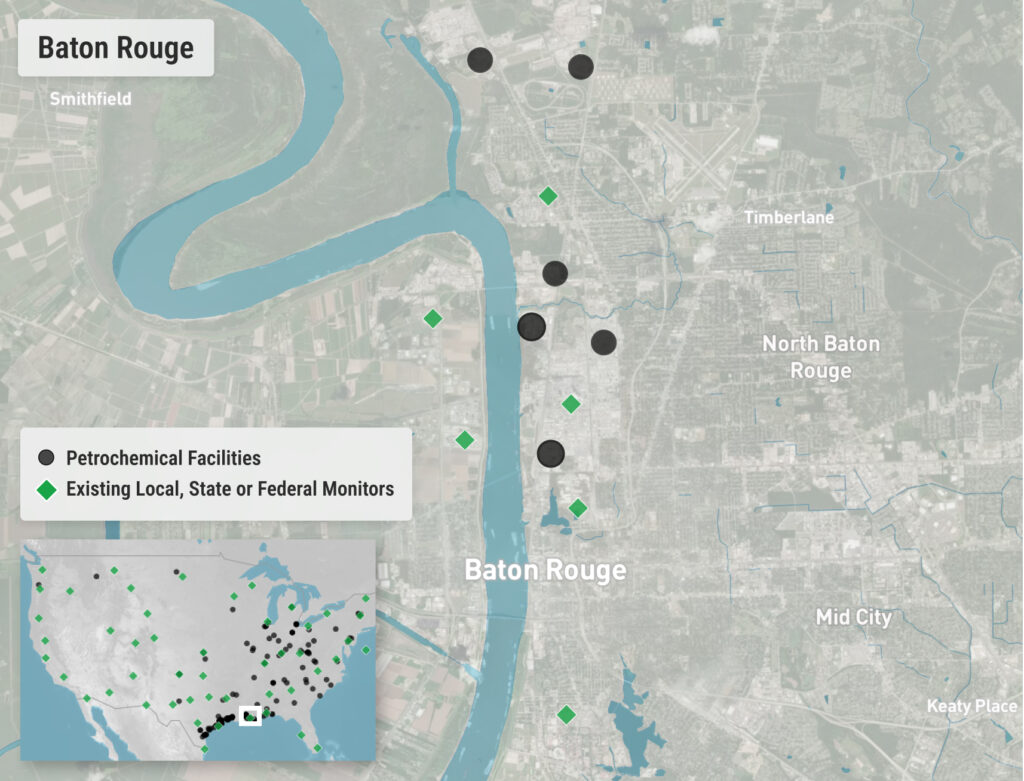Petrochemical facilities pose serious health risks to communities where they operate.
Petrochemical facilities are inadequately monitored, and the existing rules don’t always match the risks.
Everyone should be able to breathe clean air and live free of harmful, and potentially deadly, air pollution.
But people living close to petrochemical facilities are exposed to pollution known to cause cancer and other chronic health issues. This includes pollution from daily operations as well as from major chemical disasters.
We need more safeguards in place to ensure all communities have the ability to thrive. This includes more monitoring to reduce harmful pollution and stronger rules to prevent pollution in the first place.
This is especially important in areas like Houston, where petrochemical facilities are clustered closely together, right across the street from the communities people call home.
Air toxics like cancer-causing benzene and vinyl chloride from these facilities pose significant health risks, especially to children, pregnant people and seniors.


But the few air monitors that measure them are often located far from the fenceline of these facilities, and not every pollutant is measured by every monitor. There isn’t enough information about what these facilities are polluting, and the data that does exist is entirely self-reported.
Communities have long expressed that they have a right to know what they’re breathing so they can take action to protect their health and safety and demand accountability from decision-makers.
EPA should adopt the strongest possible protections for people living in communities across the country impacted by petrochemical pollution.
A newly proposed update to regulations in the Clean Air Act from the Environmental Protection Agency would begin to lay the foundation for increased accountability for the petrochemical industry.
EPA’s proposed rules cover an estimated 218 chemical manufacturing and polymer and resin facilities, almost 60% of which are located in the petrochemical corridors of Texas and Louisiana.
The proposed rules call for stronger controls on toxic air emissions, including increased monitoring at the fenceline of some of the facilities that process six high priority chemicals of concern, and strengthened protections against pollution from flaring. Stronger protections and enforcement are especially critical because many of these facilities have a documented history of violating environmental laws: recent analysis indicates that over 80% of these facilities were non-compliant in the past three years.
Facilities also emit a range of other air toxics not covered by EPA’s proposal, including cancer-causing formaldehyde–those should be monitored, too.
These rules represent a major milestone to protect the safety and health of communities. These and other foundational safeguards should be built out to other facilities to protect all communities impacted by petrochemical pollution.
The map below visualizes the facilities expected to be impacted by EPA’s proposal. It includes facility names and locations, facilities that are expected to be required to monitor at the fenceline under the proposed rules, self-reported emissions of EPA’s 6 priority chemicals, and modeled risks associated with those chemicals. It does not include cancer risks or other health concerns from the many other chemicals emitted by these and other facilities.
Explore the facilities impacted by EPA’s proposed rule:
Unfortunately, the device you're using can't show this complex interactive map.
Please visit again on a tablet or computer.
Click a facility for details
** Dot size indicates relative scale of facility's emissions
Cancer risk
lower
higher
* Risks modeled for mapped facilities in 49km zone
This map pulls from best available data on modeled emissions (2016-2020) and affected facilities at the time of EPA’s proposed rule announcement in April 2023. Read more about our methodology and data sources [PDF].


